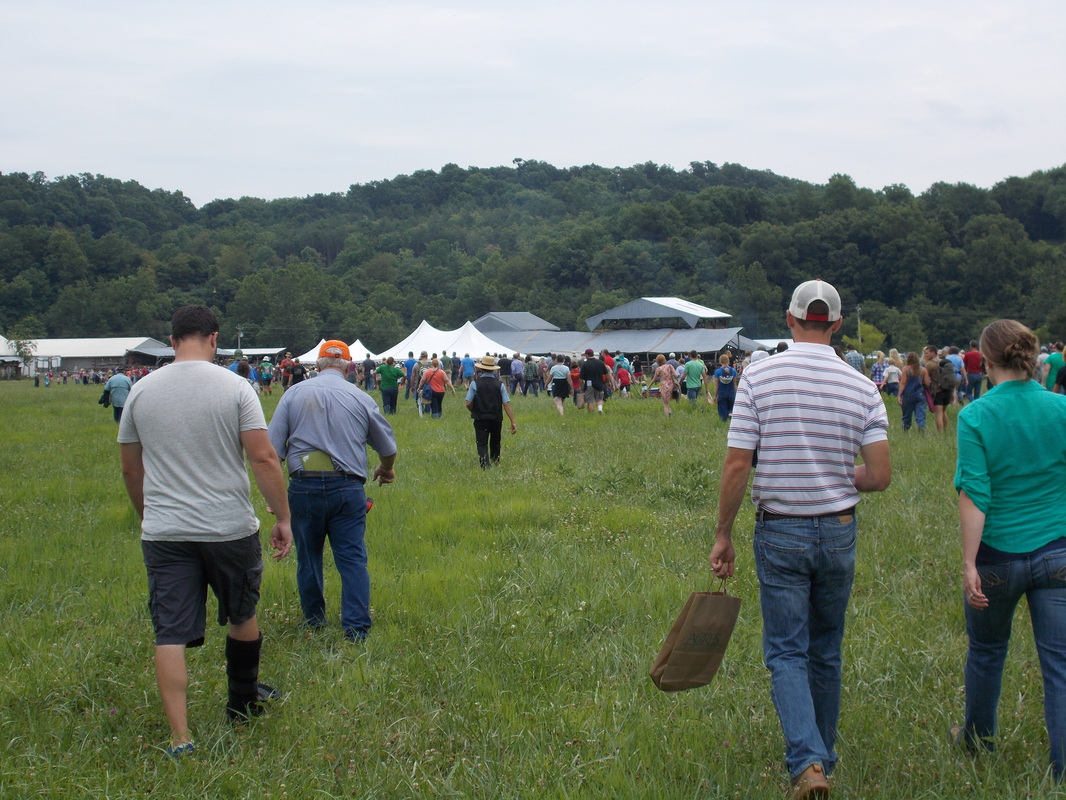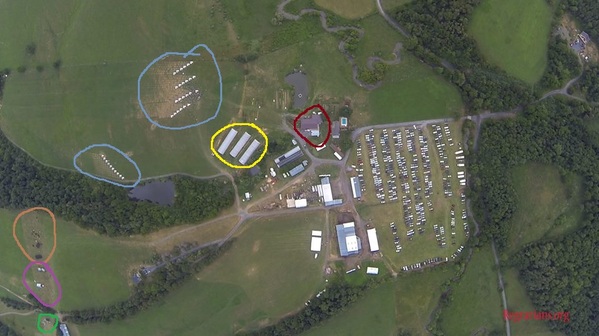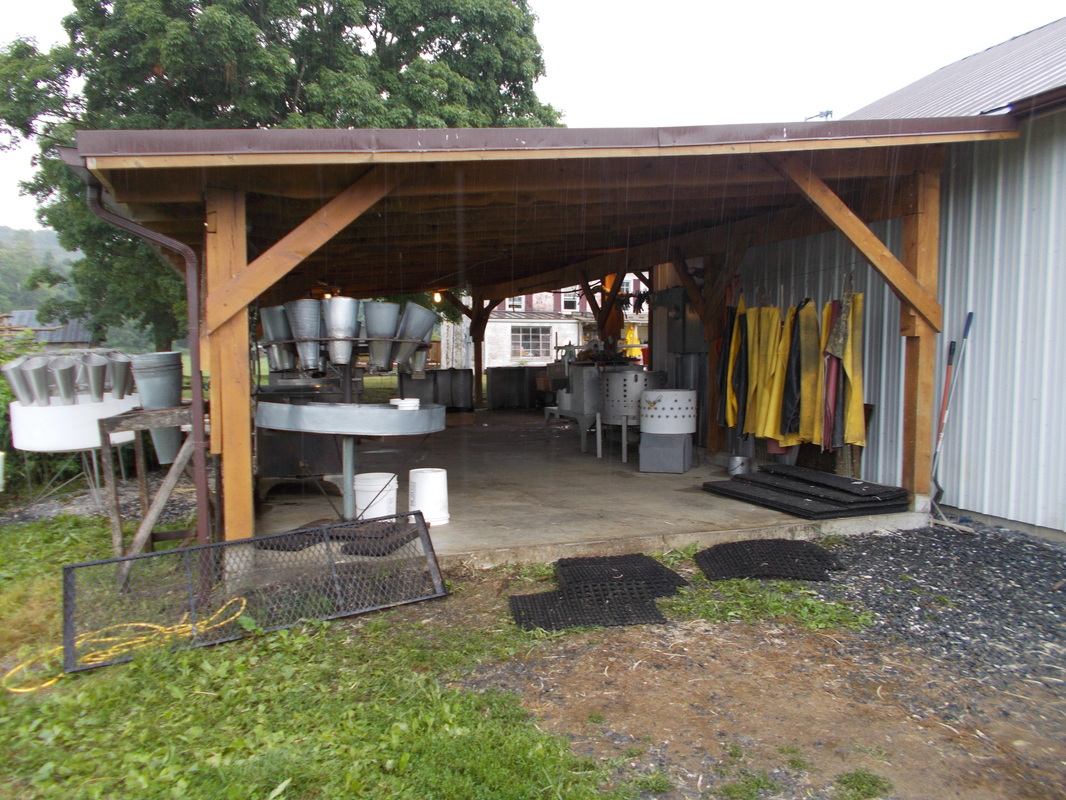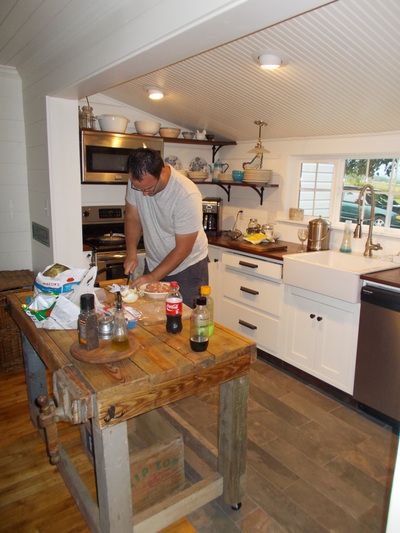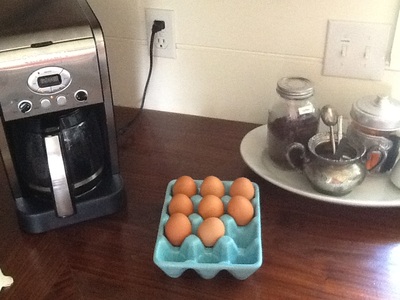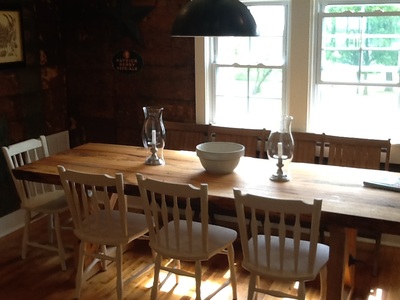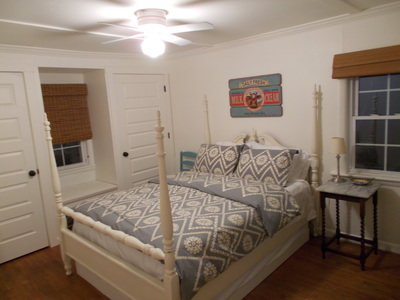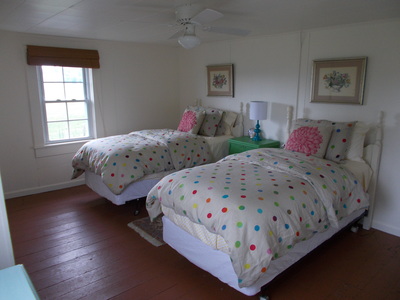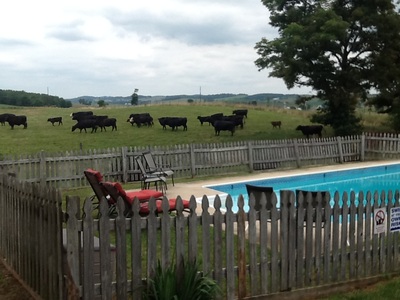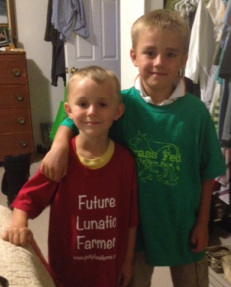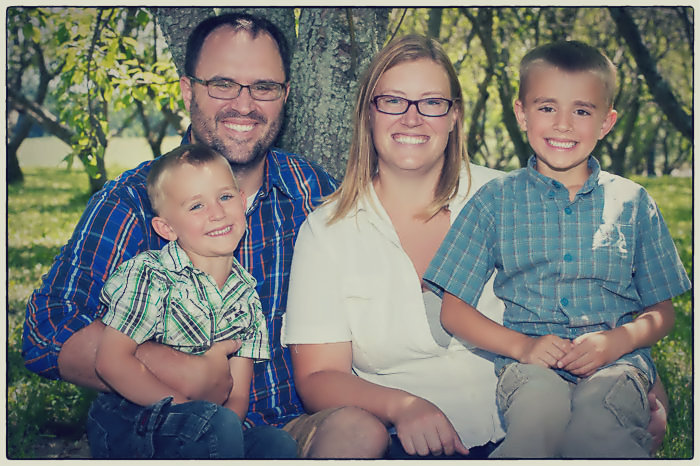NOTE: The older gentleman in the orange hat just in front of me is packing an iPad. I thought that was pretty cool!
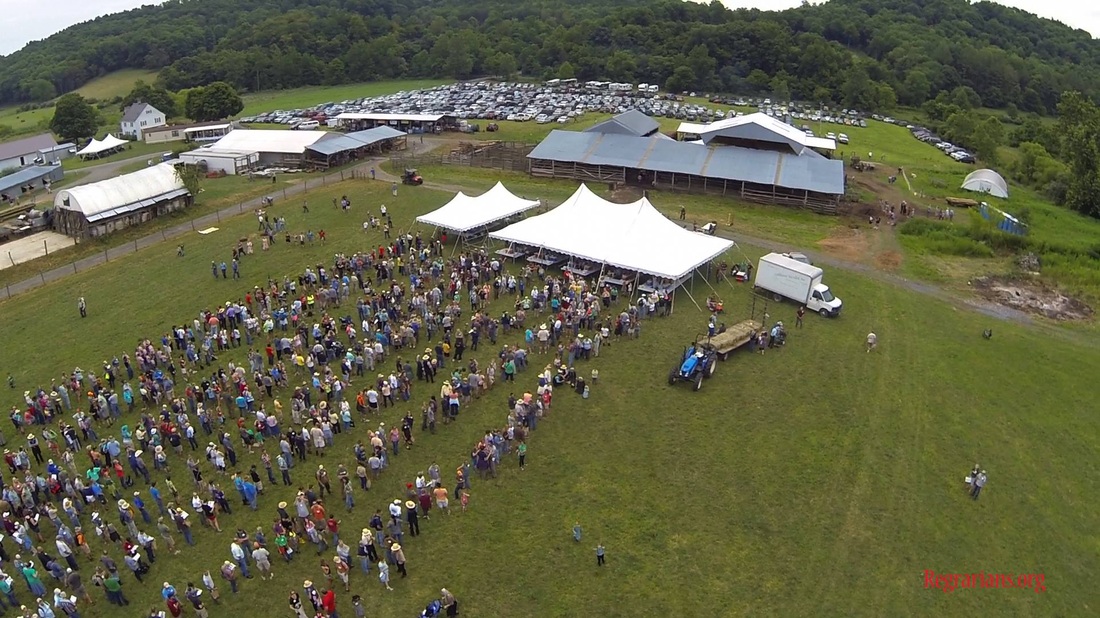
After lunch we had a protein coma and viewed some of the vendors that were there. Not just any vendors, only Salatin approved vendors. We noticed their "Carbon Shed" which is an area where they dump all of their chicken offal for composting with as much carbon (i.e. wood chips) as they can. We walked by it and while there were a few flies, no odor was noticed.
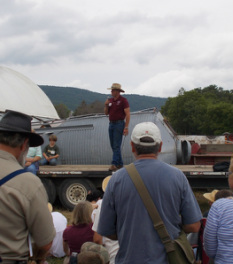
The rabbits are housed in cages that are installed several feet up off the floor in the Raken (rabbit/chicken) House. Chickens are kept at ground level for the purpose of utilizing their handy rakes (feet) to scratch the rabbit poo, which falls from the cages above, into the bedding. Therefore, there is no build-up of rabbit droppings and the bedding is aerated and easily transformed into usable compost.
What we did not know was that he had some breeding pairs for sale. There was no way we could get some as we had a 12-hour drive home and weren't leaving for two days. However, it would have been fantastic to start our rabbit venture with Daniel's rabbits.
Diana attended a seminar on their chick brooding. They have a giant shed that broods their chickens and the pictures show how they send feed on a pulley system and separate out the chickens into batches so as not to have too many together. This avoids piling up and suffocation. She learned a few pointers from their brooding operation. First, she noticed that the wood shavings used for bedding were of a much finer grade than what we use. Even though the chicks pictured were only a couple days away from going to pasture, the bedding was still clean and there was very little odor, and no new shavings had been added. This led Diana to conclude that we needed to switch to fine-grade shavings for our brooder, since we were constantly having to add fresh bedding to our brooder. She also took note of the clean, convenient method of offering water to the chicks through the use of a nipple waterer and learned about a simple schedule to use for offering grit to the chickens.
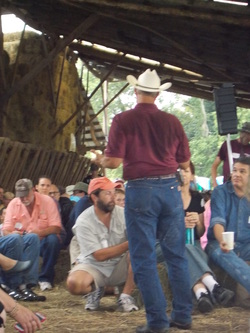 Q&A with Joel Salatin
Q&A with Joel Salatin We also learned a bit about the use of their hoophouses throughout the year, follThen the day ended with a Q&A event with Joel Salatin, which was both informative and entertaining.
An exhausting day ended with us buying some Polyface bacon to go with the farm-fresh eggs at our rental house. It was a fantastic day and one that I hope all of you can experience at some point. While the Field Days will not be offered again, Polyface Farms is open 24/7, 365 days a year to visitors. As Joel states, he desires to be fully transparent and in order to do this, you have to be willing to see people whenever. We plan on going back to a smaller event or just to visit the farm again some day with the kids.
I could go on longer about what it "felt" like to be at Polyface, or for the Shenandoah Valley for that matter. However, that becomes hard to explain when you talk about "good energy" and stuff. Just experience it for yourself. While Polyface is a long way away (for us, at least), my guess is that you can get that feeling by visiting any farm that is focused on doing things the "right way" and working to maintain happy animals, happy people, and happy plants.
Trevor
+ Diana
